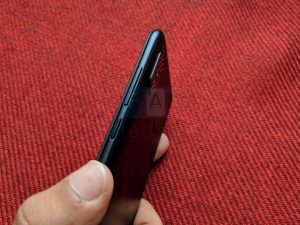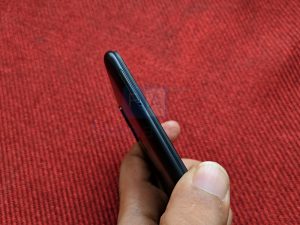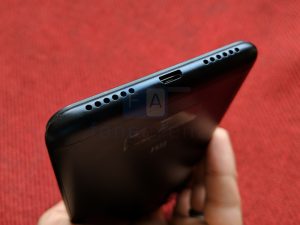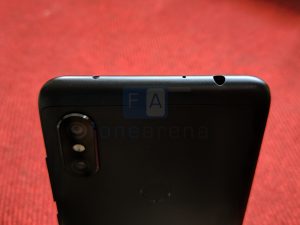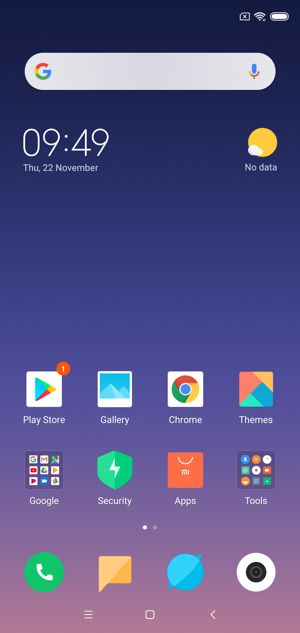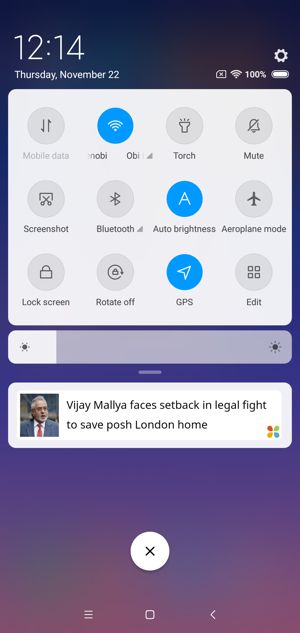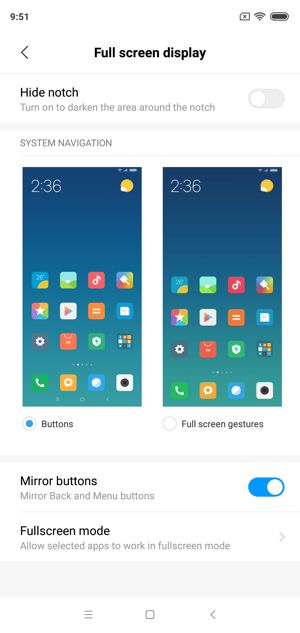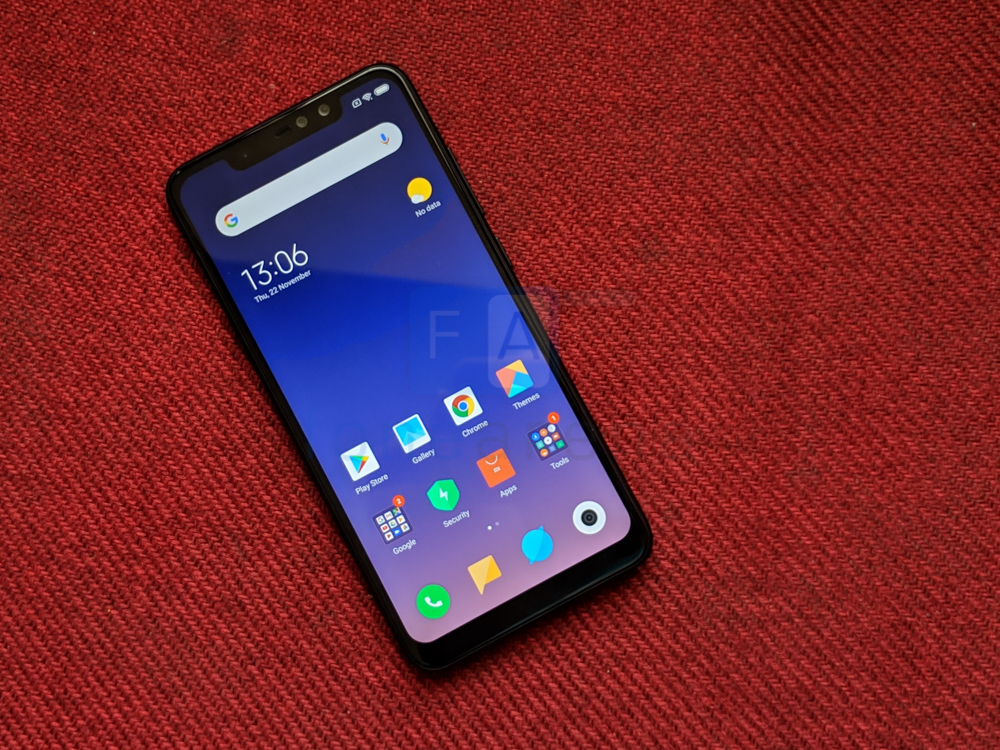
With each successive generation, Xiaomi has cemented its position as the market leader amongst entry-level and mid-range hardware. The Redmi Note series has, for the longest time, kept the crown of being the best value for money device you can get. The competition, however, hasn’t kept still. With Asus, Honor and others trying to encroach on Xiaomi’s territory, it has never been more important for the company to consistently deliver solid products. Does it manage that with the Redmi Note 6 Pro? Let’s find out.
Xiaomi Redmi Note 6 Pro specifications
- 6.26-inch (2280×1080 pixels) Full HD+ 19:9 2.5D curved glass display, 500 nits brightness, 1500:1 contrast ratio, Corning Gorilla Glass protection
- 1.8GHz Octa-Core Snapdragon 636 14nm Mobile Platform with Adreno 509 GPU
- 6GB / 4GB LPDDR4x RAM with 64GB (eMMC 5.1) storage, expandable memory up to 256GB with microSD
- Android 8.1 (Oreo) with MIUI 10
- Hybrid Dual SIM (nano + nano / microSD)
- 12MP rear camera with dual-tone LED Flash, f/1.9 aperture, 1.4μm pixel size, Dual PD focus, EIS, secondary 5MP camera with f/2.2 aperture, 1.12μm pixel size
- 20MP front-facing camera with Sony IMX376 sensor, f/2.0 aperture, secondary 2MP camera with f/2.2 aperture, 1.75μm pixel size
- Fingerprint sensor, Infrared sensor
- Dimensions: 157.9 x 76.38 x8.2mm; Weight: 182g
- Dual 4G VoLTE, Wi-Fi 802.11 ac (2.4GHz + 5GHz), Bluetooth 5, GPS + GLONASS
- 4000mAh (typical) / 3900mAh (minimum) battery with Quick Charge 3.0
Design
The Redmi Note 6 Pro’s design can be best described as more of the same. An iterative update, the device improves on the aesthetics and ergonomics of the Note 5 Pro that it replaces. The biggest change is the notch enabled display of course. To be honest, it is up to you to decide whether you feel this is a positive change or not but it is hard to overlook the increased screen real estate available. There are no capacitive keys up front and running on MIUI 10, the phone offers gesture-based navigation too.
What stood out for us was that the edges of the phone are a bit more defined which makes it much easier to grip the device. The Series 6000 Aluminum frame can be a bit slippery depending on how you hold the phone but that ridge goes a long way in ensuring a proper grip. Additionally, the right side has the power button and volume rockers while the left sports the hybrid dual-SIM tray.
Along the bottom edge is a micro USB connector while the 3.5mm headphone jack and IR blaster lie along the top edge. We spoke to Xiaomi at length about the fact that as we approach 2019, the phone still ships with an outdated connector. The company in return said that the vast majority of their users have already invested in extra cables and chargers and forcing them to upgrade was not in their best interest. Oh well, hopefully with the next generation of hardware.
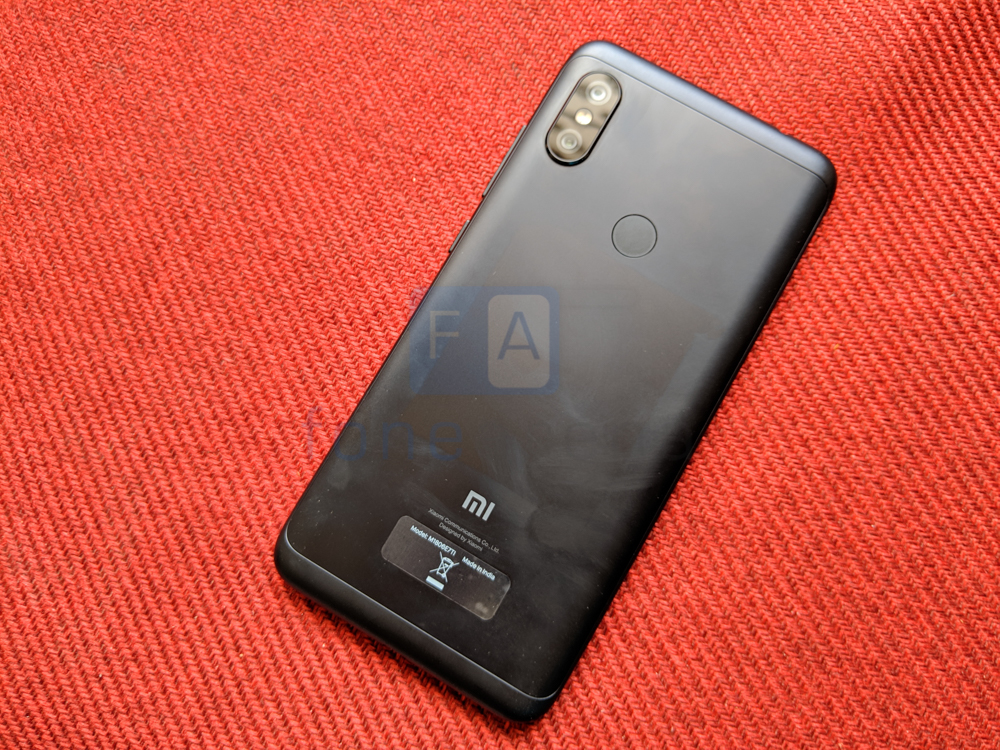
The back of the smartphone is even more similar to the Redmi Note 5 Pro. In fact, it is easy to see that Xiaomi has been graduating towards a certain homogeneity with their design and most of the product line up looks somewhat similar, at least from the back. Towards the top, left corner are dual cameras with a single LED flash. In the middle is a fingerprint reader which is a bit too small to be comfortably used. We’ve heard conflicting reports but in our experience, the fingerprint reader was as fast as any other in the category. There’s an AI-based face unlock feature too but it isn’t very secure. Additionally, at the top and bottom are plastic end caps for improved antenna performance. The back picks up a LOT of scuffs that can be really hard to clean.

Worth a mention is a new P2i coating that gives the phone splash resistance. No, the phone is most definitely not waterproof but you should be fine if you spill a glass of water on your phone. The coating which covers all the components of the phone acts as a film and prevents water from seeping into the internals.
Software
With MIUI 10 onboard, the Redmi Note 6 Pro gains a range of features that make the software and hardware experience a lot more cohesive. With longer, 19:9 displays getting more popular, the ability to use gestures for navigation is very handy to have. Xiaomi’s implementation is however still heavily entrenched under their own skin and is quite a departure from how stock Android works. Moving back, for example, requires you to swipe in from the side of the display. This is in contrast to the standard gesture UX of swiping the bottom right corner of the screen. It’s not bad, it is just different and has a bit of a learning curve to it.
There is an option to switch back to on-screen buttons and if you’re used to Redmi phones, you might prefer this option. Likewise, there is an option to ‘switch off’ the notch as well. With the brightness low enough, it passes off quite well and displays the time, battery, WiFi & SIM status at the edges. Being an LCD display, you can obviously see a grey tint once you crank up the brightness. The gradient of the curve on hiding the notch doesn’t match that of the lower half of the display.
In addition to Xiaomi’s own app suite, there are a whole bunch of preloaded applications including Facebook, PhonePe, Daily Hunt, NewsPoint and more. Right off the bat, these start cluttering the notifications shade. Thankfully it is possible to uninstall almost all of these 3rd party apps. Finally, the phone is running Android 8.1 Oreo and while there’s no certain timeline for it, it should get the Pie update in due course.
Performance
The phone is powered by a Snapdragon 636 chipset paired with 4 or 6GB of RAM depending on the SKU. This isn’t the fastest chipset around and it reflects in the performance. I noticed micro stutters when jumping between apps and though it gets the job done, you can’t help but wish that it was a bit more powerful. Look, I get it that the audience for the phone might not necessarily care for the spec sheet but at a time when the competition is bending over backwards to give more to the buyers, the hardware here feels lackluster at best. Regardless, games like PUBG work well enough but it is not entirely a buttery smooth experience. Chek out some synthetic benchmark scores below.

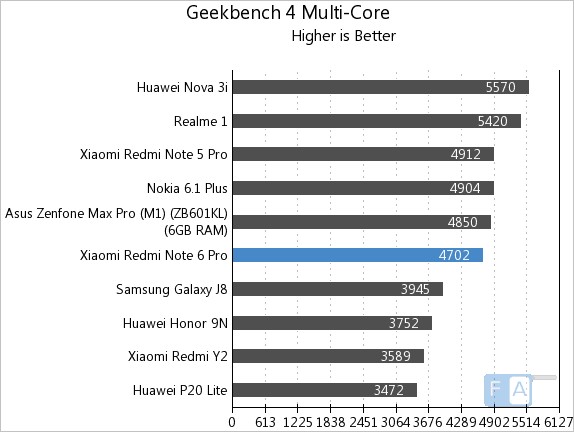
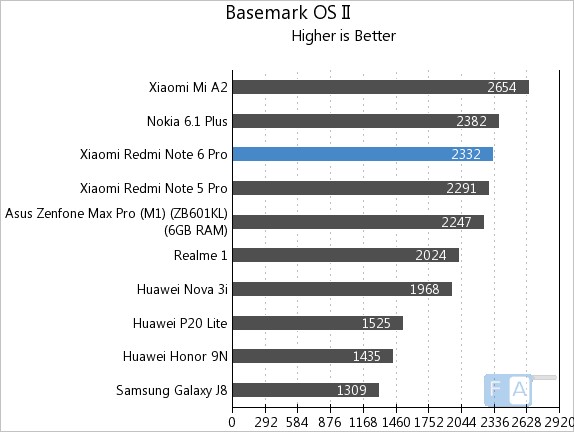
Display
For all its shortcomings, the display on the Redmi Note 6 Pro is remarkably nice. The viewing angles and contrast levels are great and there’s little to no colour shift even at extreme angles. Outdoor visibility too continues to be great. With a maximum of 500 nits, you can easily crank it up bright. Our only gripe, and it’s a little one, is that the auto brightness control can be a bit too aggressive and reduces the screen brightness level a bit too much indoors.

The other big change, of course, is that the aspect ratio is now 19:9 which has allowed Xiaomi to cram in a 6.26” FHD+ panel within a relatively petite frame. Bezels are as small as they get in the category too. You also get Gorilla Glass for a modicum of protection.
Camera
The Redmi Note 5 Pro sported one of the better performing cameras in the mid-range segment so it is quite nice to see Xiaomi doubling down further on this. There are two cameras at the back and two at the front. The rear camera now has a f/1.9 aperture and a 12MP sensor paired with a 5MP depth-sensing camera. Meanwhile, over at the front, a 20MP camera has been paired with a 2MP secondary module for depth sensing. A more tangible upgrade is the addition of PDAF (Phase Detection Auto Focus) which helps the Redmi Note 6 Pro get a focus lock much faster.

Following current trends, the phone gains ‘AI’ scene detection as well as AI Portraits. We didn’t perceive a big difference in the shots captured with and without AI mode but it has been optimized for Indian usage and has also been trained on cows. Make what you will of that! Video capabilities remain the same as the Note 5 Pro topping off at 1080p, 30FPS along with Electronic Image Stabilization. We’ve included a bunch of camera samples below that should give you a better idea of the capabilities of the phone.

In well-lit conditions, the phone does a pretty good job. Images are rich in detail albeit just a little over-exposed.
We did notice that the phone doesn’t handle direct sunlight all that well. This can be seen in the first shot where there is a bit of a flare. In the second image, we used the portrait mode. The edge detection isn’t too bad but the camera did get tricked by the grill behind the subject leading to a not so great depth effect. Still, this is a challenging setting and the phone did do better in other situations. The third shot shows off the camera capabilities in a dimly lit room. The camera manages a bright and sharp image with limited noise. And finally, the close up in the fourth image shows off the fast autofocus capabilities as well as macro capabilities. With the flower moving in the breeze, the phone still managed a decent image though once again, the photograph appears to be overexposed.
Connectivity & Battery Life
Connectivity options on the Redmi Note 6 Pro are essentially the same as on the Note 5 Pro. The phone includes a Hybrid SIM slot in which the second slot can be used for microSD cards. There’s dual-band WiFi 802.11 ac, Bluetooth 5.0, GPS/GLONASS and Dual 4G VoLTE support. Xiaomi continues to retain the infrared sensor too. Storage is 64GB across variants and you get about 50GB free at first boot. It is possible to expand this as we mentioned earlier.
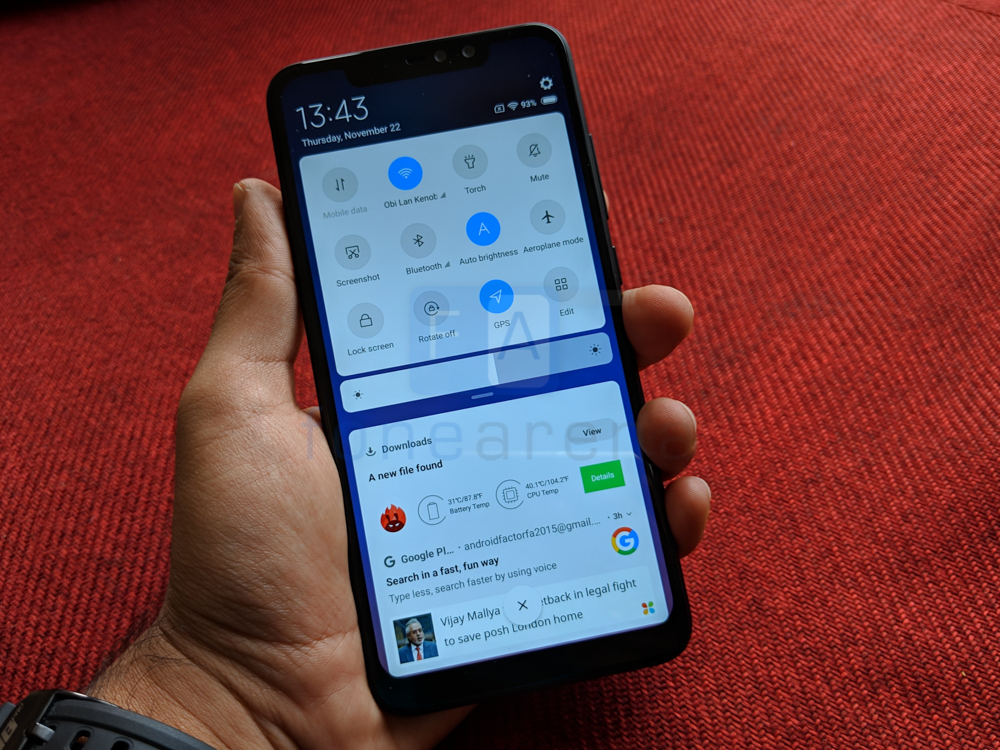
Battery life is where the Redmi series has always excelled and the Note 6 Pro is no exception. The phone has a 4000 mAh battery along with Quick Charge 3.0. The Redmi Note 6 Pro lasts a full day of use and then some. With multiple social media apps, a number of phone calls, internet usage, we usually ended up depleting just a smidgen over 50% of the battery. Even with aggressive gaming use, you’ll still easily make it to the end of the day.
Conclusion
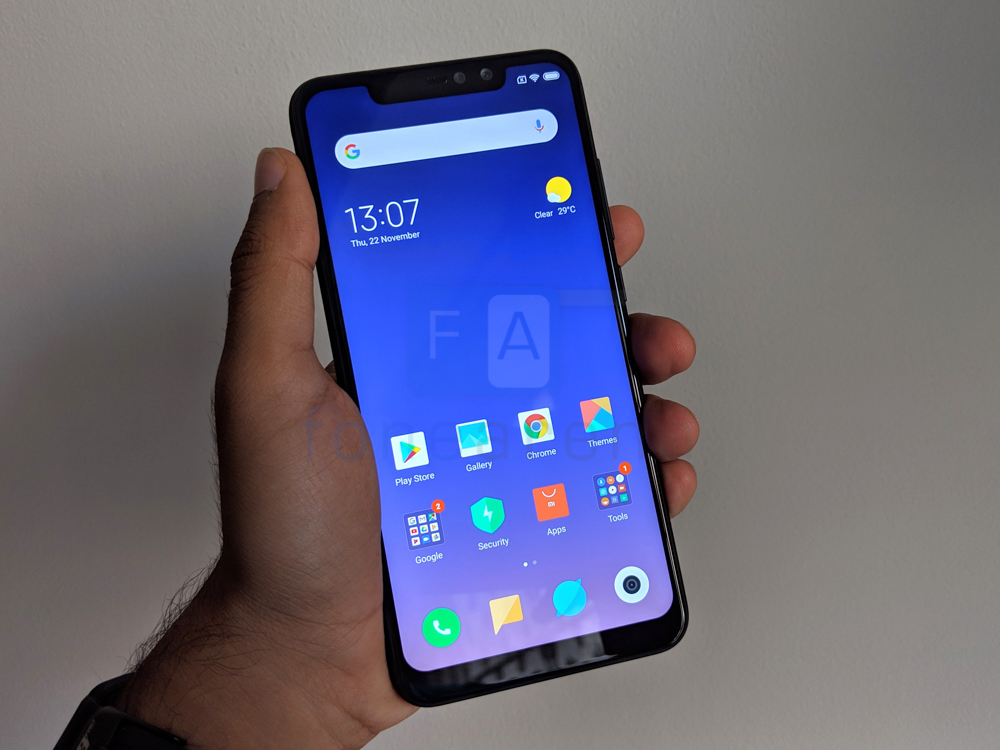
The Redmi Note 6 Pro isn’t really a ground-breaking device. Think of it as the natural evolution of the Redmi Note 5 Pro. There are refinements all around and a few changes to catch up with current trends. While we wish that the company got a bit more aggressive about bringing the fight to their competitors, Xiaomi knows that their bread and butter is through value pricing. At Rs. 13,999, it is easy to overlook the minor quibbles and the Redmi Note 6 Pro continues to offer exceptional value for money. It will go on sale starting from tomorrow across Flipkart, Mi.com and Mi Home.

